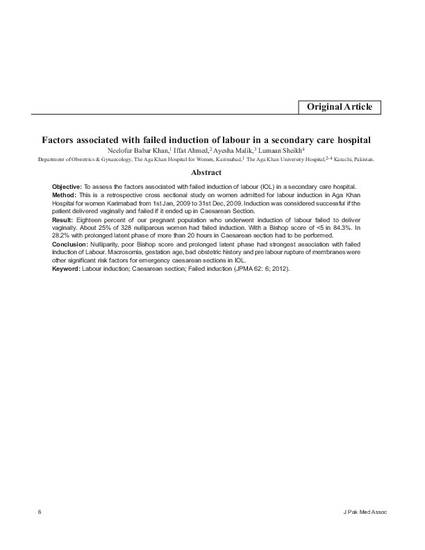
Objective: To assess the factors associated with failed induction of labour (IOL) in a secondary care hospital.
Method: This is a retrospective cross sectional study on women admitted for labour induction in Aga Khan Hospital for women Karimabad from 1st Jan, 2009 to 31st Dec, 2009. Induction was considered successful if the patient delivered vaginally and failed if it ended up in Caesarean Section.
Result: Eighteen percent of our pregnant population who underwent induction of labour failed to deliver vaginally. About 25% of 328 nulliparous women had failed induction. With a Bishop score of <5 in 84.3%. In 28.2% with prolonged latent phase of more than 20 hours in Caesarean section had to be performed.
Conclusion: Nulliparity, poor Bishop score and prolonged latent phase had strongest association with failed Induction of Labour. Macrosomia, gestation age, bad obstetric history and pre labour rupture of membranes were other significant risk factors for emergency caesarean sections in IOL.
Available at: http://works.bepress.com/lumaan_sheikh/16/
